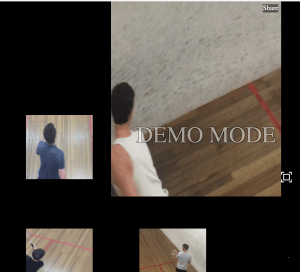Overall I found this semester very enthralling, despire bouts of, I would say, unproductivity and lack of attention. I think that nonetheless, I gained an understanding in this studio about a creative praxis I had never previously explored, and I am very thankful for that. This undeniably relies on the framework and foundation of our exploration of the relationship between the terms noticing, nonfiction and documentary.
I think this semester I really homed in on understanding how much of an antonym “noticing” could be to the word “vacant”. All of us would be so lacking if we weren’t noticing and marking more, as so much would be lost in our own lived experiences if we didn’t pay more attention to the things that we found interesting. I would posit that in the spectrum that exists in the realm of being vacant and fully noticing, there is an amount of noticing one does at a baseline level, but to fully notice, to subscribe to marking, noticing and recording, is to notice at a standard that exceeds this baseline. No Vacancy.
In the final assignment, I would say that my understanding of the boundaries (or lack thereof) of non-fiction really had an emphasis. There is something about Korsakow I think, in its synergistic qualities for non-fiction works, and the choose-your-own-adventure design of it all, such that I could choose any such video, and in clicking as much, simulate several squash points that could in turn simulate more? That is, at least what I would argue is something I noticed came from this assignment, that each Korsakow outcome was manufacturing a moment in squash, truly imaginative.
I think for me I ended up exploring a few noticing processes in the end, I would say that my understanding of lingering improved greatly, as each video in the Korsakow part of exploring squash allowed me to contextualise further how I could linger while moving, something I had noted was worth trying to further understand. I would say that the audiovisual part of exploring squash allowed me to dabble in wondering, as I was considering certain outcomes throughout my creative process that confront the hypothetical situations that I had been constantly considering for the assignment. I think there would even be an applicable argument that the Korsakow part is the fully formed conception of my question to recreating the experience of playing squash, and the video part almost serves as a visual representation of all the hypothetical thoughts that I had been laying down trying to conceptualise my project into fruition.
In terms of learning outcomes, I would say if I had to think of only three:
- Allow one to understand and learn the dichotomy that exists between non-fiction and documentary
I’ve come to really understand the dichotomy that can exist between non-fiction and documentary, which is something I had never previously considered prior. I had also previously thought of non-fiction, in needing to be “real” and not fictional, as way more limited that I now feel it is. I think this comes from an acceptance and understanding that things can be real, but explored so much more thoroughly than we do, at our usual baseline of noticing.
- Encourage one to explore beyond the boundaries of baseline noticing
As I have been opining about, I would argue that Seeing the Unseen, in its entirely was constantly pushing those that undertook the course to transcend beyond the bassline nature of their own lived experience. Because in the same vein that Hannah has a Korsakow document that intends to never end, our transcending baseline noticing would most certainly allow for an improved lived experience, which affectionately brings me to my last outcome..
- Force one to confront the presence of living media in our day to day lives
By this I mean, in the sense that Benning’s works were perhaps the most important works to contextualise this Studio, the studio really did encourage us to constantly be thinking of how what we were experiencing could become a non-fiction piece. This is why we all ended up looking to the sky, I think.



